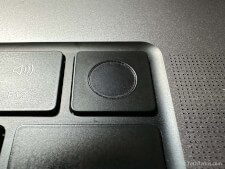Biometrics
Biometrics is a category of technologies that can detect distinctive human physical characteristics to identify a specific person. Biometric sensors can be used for authentication instead of, or in addition to, other methods like a username and password. The most common biometric authentication tools are fingerprint sensors and facial recognition camera arrays.
Modern smartphones, tablets, and laptop computers often include at least one type of biometric authentication. These sensors allow you to use a biometric input to unlock the device quickly and skip entering a password or passcode. For example, FaceID lets you unlock your iPhone with a quick face scan, while some Android smartphones integrate a fingerprint sensor into the display to unlock with a touch. Other forms of identification that are less common include retina/iris scanning and voice recognition, and future biometric sensors may use other factors like ear shape, body odor, or the blood veins in a person's palms.

Multi-factor authentication systems use biometric data as one possible factor for increased security. For example, requiring a facial scan in addition to a username and password is more secure than requiring only one method or the other because it relies on both inherent physical factors and specific knowledge. Passkeys can also use biometric authentication to log you into websites without entering a password at all, instead relying on the device having previously authenticated its user.
There are some significant privacy concerns regarding the use of biometric data. First, some forms of biometric authentication can unlock a device without a person's consent or knowledge — for example, unlocking an unconscious person's smartphone by placing their finger on a fingerprint sensor. Some early facial recognition algorithms used a standard webcam for authentication and could be tricked with a photograph. Finally, passwords can be changed when necessary, while biometric information like a face or fingerprint cannot.
 Test Your Knowledge
Test Your Knowledge